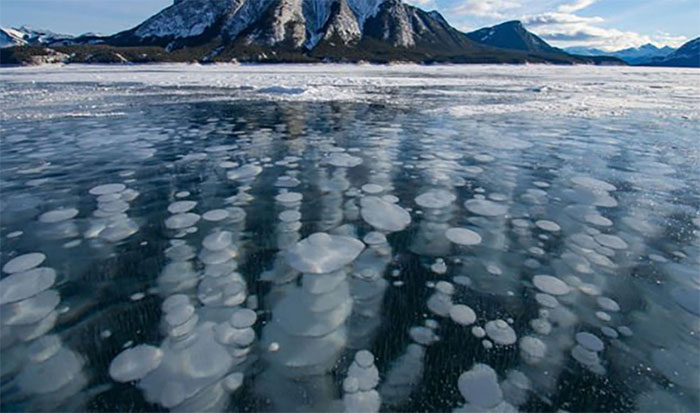Discover a strange 'boiling' sea in Siberia
Russian scientists have discovered a sea of dense air bubbles under the ice that looks like boiling water in the Arctic sea.
Unusual bubbling on the sea creates a beautiful setting. Experts on the research vessel Akademik M. Keldysh who discovered the strange phenomenon were extremely surprised.

Strange gas bubbles in the Arctic have just been discovered.
Researcher Serge Nikiforov was the first to discover the anomaly when he saw an emerald blob on a dark background. Then came a series of air bubbles covering an area of 4 to 5 square meters.
Professor Igor Semiletov, the head of the expedition of Tomsk Polytechnic University, exclaimed that it was the largest methane emission he had ever seen. The fountain was identified to be 9 times higher than the planet average.
After three days of researching this strange phenomenon, researchers are continuing to study the Laptev Sea in the Arctic during the expedition.
The initial cause of the phenomenon could be a large amount of gas being locked inside Siberia's frozen soil and under lakes that have leaked since the end of the Earth's ice age some 10,000 years ago.
In fact, over the past few decades, as the Earth has warmed, experts believe that the frozen ground has begun to melt faster. This speeds up the release of methane - a greenhouse gas 23 times stronger than carbon dioxide at a dangerous rate.
- Why can monks meditate in a pan of boiling oil?
- Discover the second giant crater in Siberia
- Appeared more mysterious craters in Siberia
- Special mineral mine found in Siberia
- Decode the cause of a sudden death in Siberia
- Mystery 'death valley' in Siberia
- Can we put our hands in a pan of boiling oil without burns?
- Nanotubes can 'freeze' boiling water
- Video: Mysterious crater in Siberia
- Find boiling water in the middle of the cold Arctic
- Lake Kivu
- Strange mysterious river water between the Amazon forest
 'Fine laughs' - Scary and painful torture in ancient times
'Fine laughs' - Scary and painful torture in ancient times The sequence of numbers 142857 of the Egyptian pyramids is known as the strangest number in the world - Why?
The sequence of numbers 142857 of the Egyptian pyramids is known as the strangest number in the world - Why? Miracle behind the world's largest stone Buddha statue
Miracle behind the world's largest stone Buddha statue What is alum?
What is alum?